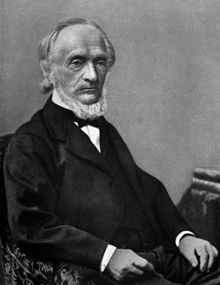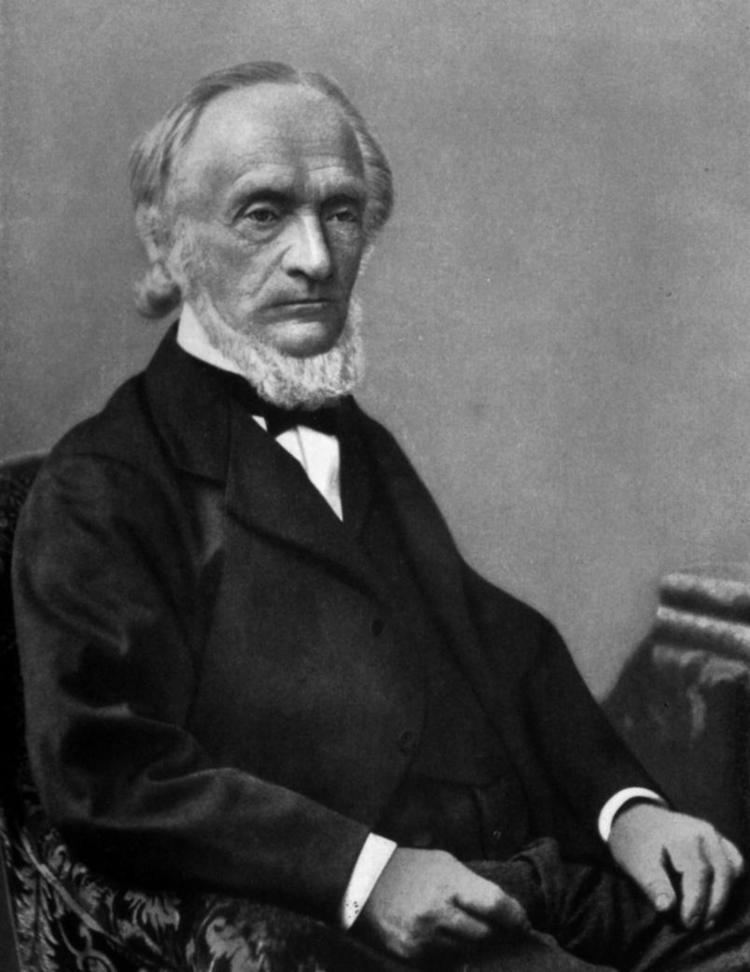Nationality Swiss Occupation Mathematician | Name Ludwig Schlafli Role Mathematician | |
 | ||
Died March 20, 1895, Bern, Switzerland | ||
Ludwig schl fli
Ludwig Schläfli (15 January 1814 – 20 March 1895) was a Swiss mathematician, specialising in geometry and complex analysis (at the time called function theory) who was one of the key figures in developing the notion of higher-dimensional spaces. The concept of multidimensionality has come to play a pivotal role in physics, and is a common element in science fiction.
Contents
- Ludwig schl fli
- Fourth Dimension Ludwig Schlafli 19th c Swiss Geometer
- Youth and education
- Teaching
- Later life
- Higher dimensions
- Polytopes
- References
Fourth Dimension - Ludwig Schlafli - 19th c. Swiss Geometer
Youth and education

Ludwig spent most of his life in Switzerland. He was born in Grasswil (now part of Seeberg), his mother's hometown. The family then moved to the nearby Burgdorf, where his father worked as a tradesman. His father wanted Ludwig to follow in his footsteps, but Ludwig was not cut out for practical work.

In contrast, because of his mathematical gifts, he was allowed to attend the Gymnasium in Bern in 1829. By that time he was already learning differential calculus from Abraham Gotthelf Kästner's Mathematische Anfangsgründe der Analysis des Unendlichen (1761). In 1831 he transferred to the Akademie in Bern for further studies. By 1834 the Akademie had become the new Universität Bern, where he started studying theology.
Teaching
After his graduation in 1836, he was appointed a secondary school teacher in Thun. He stayed there until 1847, spending his free time studying mathematics and botany while attending the university in Bern once a week.
A turning point in his life came in 1843. Schläfli had planned to visit Berlin and become acquainted with its mathematical community, especially Jakob Steiner, a well known Swiss mathematician. But unexpectedly Steiner showed up in Bern and they met. Not only was Steiner impressed by Schläfli's mathematical knowledge, he was also very interested in Schläfli's fluency in Italian and French.
Steiner proposed Schläfli to assist his Berlin colleagues Carl Gustav Jacob Jacobi, Peter Gustav Lejeune Dirichlet, Carl Wilhelm Borchardt and himself as an interpreter on a forthcoming trip to Italy. Steiner sold this idea to his friends on the following way, which indicates Schläfli must have been somewhat clumsy at daily affairs:
... während er den Berliner Freunden den neugeworbenen Reisegefaehrten durch die Worte anpries, der sei ein ländlicher Mathematiker bei Bern, für die Welt ein Esel, aber Sprachen lerne er wie ein Kinderspiel, den wollten sie als Dolmetscher mit sich nehmen. [ADB]English translation:
... while he (Steiner) praised/recommended the new travel companion to his Berlin friends with the words that he (Schläfli) was a provincial mathematician working near Bern, an 'ass for the world' (i.e., not very practical), but that he learned languages like child's play, and that they should take him with them as a translator.Schläfli accompanied them to Italy, and benefited much from the trip. They stayed for more than six months, during which time Schläfli even translated some of the others' mathematical works into Italian.
Later life
Schläfli kept up a correspondence with Steiner till 1856. The vistas that had been opened up to him encouraged him to apply for a position at the university in Bern in 1847, where he was appointed(?) in 1848. He stayed until his retirement in 1891, and spent his remaining time studying Sanskrit and translating the Hindu scripture Rig Veda into German, until his death in 1895.
Higher dimensions
Schläfli is one of the three architects of multidimensional geometry, together with Arthur Cayley and Bernhard Riemann. Around 1850 the general concept of Euclidean space had not been developed — but linear equations in
From 1850 to 1852 Schläfli worked on his magnum opus, Theorie der vielfachen Kontinuität, in which he initiated the study of the linear geometry of
During this period, Riemann held his famous Habilitationsvortrag Über die Hypothesen welche der Geometrie zu Grunde liegen in 1854, and introduced the concept of an
Below is an excerpt from the preface to Theorie der vielfachen Kontinuität:
English translation:
The treatise I have the honour of presenting to the Imperial Academy of Science here, is an attempt to found and develop a new branch of analysis that would, as it were, be a geometry ofWe can see how he is still thinking of points in
Polytopes
In Theorie der Vielfachen Kontinuität he goes on to define what he calls polyschemes, nowadays called polytopes, which are the higher-dimensional analogues to polygons and polyhedra. He develops their theory and finds, among other things, the higher-dimensional version of Euler's formula. He determines the regular polytopes, i.e. the
Although Schläfli was familiar to his colleagues in the second half of the century, especially for his contributions to complex analysis, his early geometrical work didn't get proper attention for a long time. At the beginning of the twentieth century Pieter Hendrik Schoute started to work on polytopes together with Alicia Boole Stott. She reproved Schläfli's result on regular polytopes for dimension 4 only and afterwards rediscovered his book. Later Willem Abraham Wijthoff studied semi-regular polytopes and this work was continued by H.S.M. Coxeter, John Conway and others. There are still many problems to be solved in this area of investigation opened up by Ludwig Schläfli.
